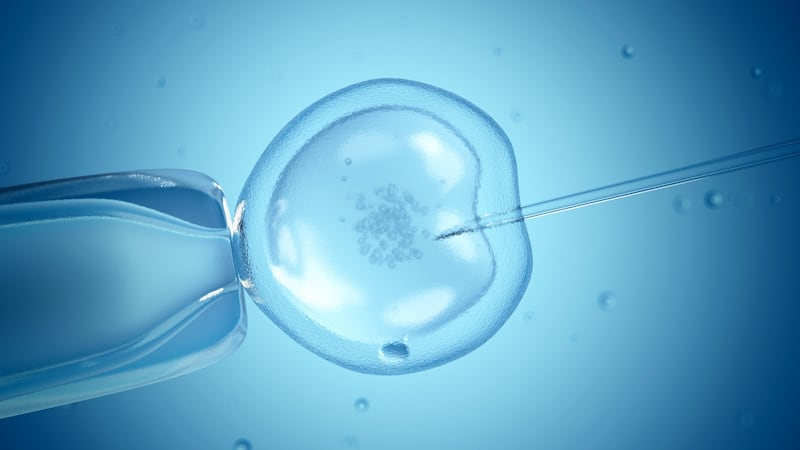Intrauterine Insemination (IUI)
IUI involves the injection of a prepared sperm from the male partner into the woman’s womb around the time of ovulation.
Dr Wingfield said “you monitor the woman. When she is ovulating you get the man to produce a sperm sample, prepare that in the lab to select out the best sperm, and then put the sperm into her uterus”. However, the success rate with IUI is “low” and “everything has to be nearly normal. So the woman has to be ovulating, her pelvis needs to be more or less normal, her fallopian tubes need to be normal and the sperm needs to be normal, or just slightly below par.”

“If the woman is over 35 we tend to recommend IVF rather then IUI because the success rate is higher,” Dr Wingfield added. In general IUI has a success rate of approximately 12 per cent per attempt.
In Vitro Fertilisation (IVF)
The world's first IVF baby, Louise Brown, was born in 1978. Since then more than five million IVF babies have been born worldwide.
IVF involves a number of key steps. These include ovarian stimulation where a woman takes fertility drugs, usually in the form of daily injections, to stimulate her ovaries to produce multiple eggs. The woman is then sedated and the eggs are retrieved. The aim is to collect between 8 and 10 eggs but some women will have more and some will have less. Once the eggs are collected they are mixed with the sperm in the lab and left to incubate in the hope that the eggs will fertilise and form embryos. Meanwhile, the woman also takes other fertility drugs to build up the lining of her womb so it is ready to receive and accommodate the resulting embryos.
Approximately 50 per cent of eggs will fertilise and around half of those will develop into embryos (a process that usually takes between one to five days). After two, three or five days, embryos are then transferred to the woman’s womb. While it is up to individual clinics to decide how many embryos are transferred it is usually one to two. Dr Wingfield said that best practice is to limit the number transferred in order to avoid multiple pregnancies (twins and triplets) which are high-risk pregnancies. In very exceptional cases (usually in older women) up to three embryos may be transferred. Any additional embryos can be frozen to be used at a later date.
Intracytoplasmic Sperm Injection (ICSI)
ICSI is a type of IVF usually used in cases where a man has a very low sperm count or poor sperm motility. With standard IVF, approximately 100,000 sperm are put in with each egg and placed overnight in an incubator where the hope is that one sperm will fertilise each egg. With ICSI a single sperm is injected into the egg. “The whole procedure as far as the couple is concerned is the same – it is just the way we process the sperm and the eggs in the lab that is different,” Dr Wingfield says.
IVF in a woman under the age of 35 has a success rate of up to 50 per cent but it is very important to know whether clinics are quoting the chance of having a positive pregnancy test or of actually having a baby (livebirth rate).
The Merrion Fertility Clinic’s overall pregnancy rate (a pregnancy seen on ultrasound scan) for IVF or ICSI in 2014 was 53.2 per cent per completed cycle of treatment but the livebirth rate ranges from over 50 per cent in women under 35 to only 5 per cent in women aged 43.
With IVF and ICSI, couples have at least a one-in-three chance of getting pregnant and having a baby. If the woman is under-35, the success rate is close to 50 per cent. However in women who are 42 and above the chance of having a baby is only one in 20 with IVF using her own eggs.
According to Dr Wingfield, while 20 per cent of women aged 42 may get pregnant using their own eggs, the rate of miscarriage at this age is over 50 per cent, so the chances of having a live birth is just 5 to 7 per cent.
At 40 there is probably a 20 per cent chance of having a live birth while at 37 /38 years of age it is approximately 35 per cent with one treatment, she said.
“Many couples will have extra embryos frozen so it increases their chances if they come back to use these embryos. A group which do very well are those who have one embryo transferred to the woman’s womb and others frozen. We recommend this for couples with good quality embryos and the success rate here for one fresh and one frozen transfer is 70-80 per cent. Unfortunately not all couples will have such good quality and, as always, the woman’s age is critical.”
IVF using donor eggs
Success rates for IVF plummet once a woman reaches 40, so some couples turn to donor eggs. In IVF with donor eggs, the process is exactly the same except that the donor undergoes ovarian stimulation and egg collection. The donor eggs are then mixed with the male partner’s sperm and the embryo transferred into the woman’s womb.
Because the donors are young, with young eggs, the success rate for IVF with donor eggs is much higher at up to 60 per cent.
“There are problems with women being older and not realising how much that affects their fertility. Really the ideal time is in your late 20s early 30s so once you get to 35 you are on the downhill slope,” Dr Wingfield says.
She also said that she is seeing a lot more obesity and PCOS in younger women.
Future trends Dr Wingfield says egg freezing is improving, though still not as good as trying naturally, and that genetic screening of embryos, which is being increasingly used in the US is also something that will become more common, although it is not currently recommended as standard practice.
There have also been breakthroughs in uterine transplantation, which although at a very early stage, may be an alternative to surrogacy in the future.
Her one piece of advice for those struggling with fertility would be to seek advice “sooner rather than later”. For younger people, however, she says it is important to remember that it can be completely normal for it to take up to a year to conceive naturally, so they shouldn’t panic and rush to have investigations and treatments if they haven’t conceived within that time.









